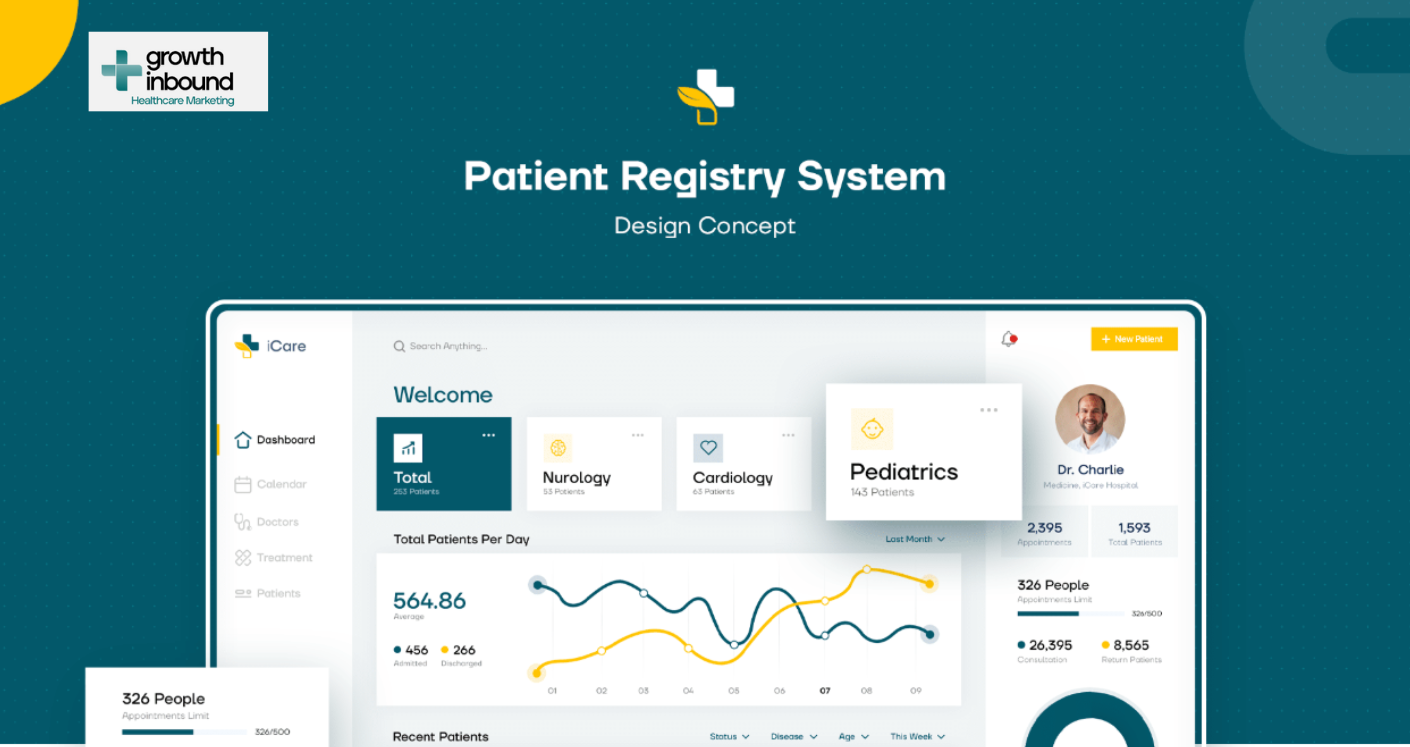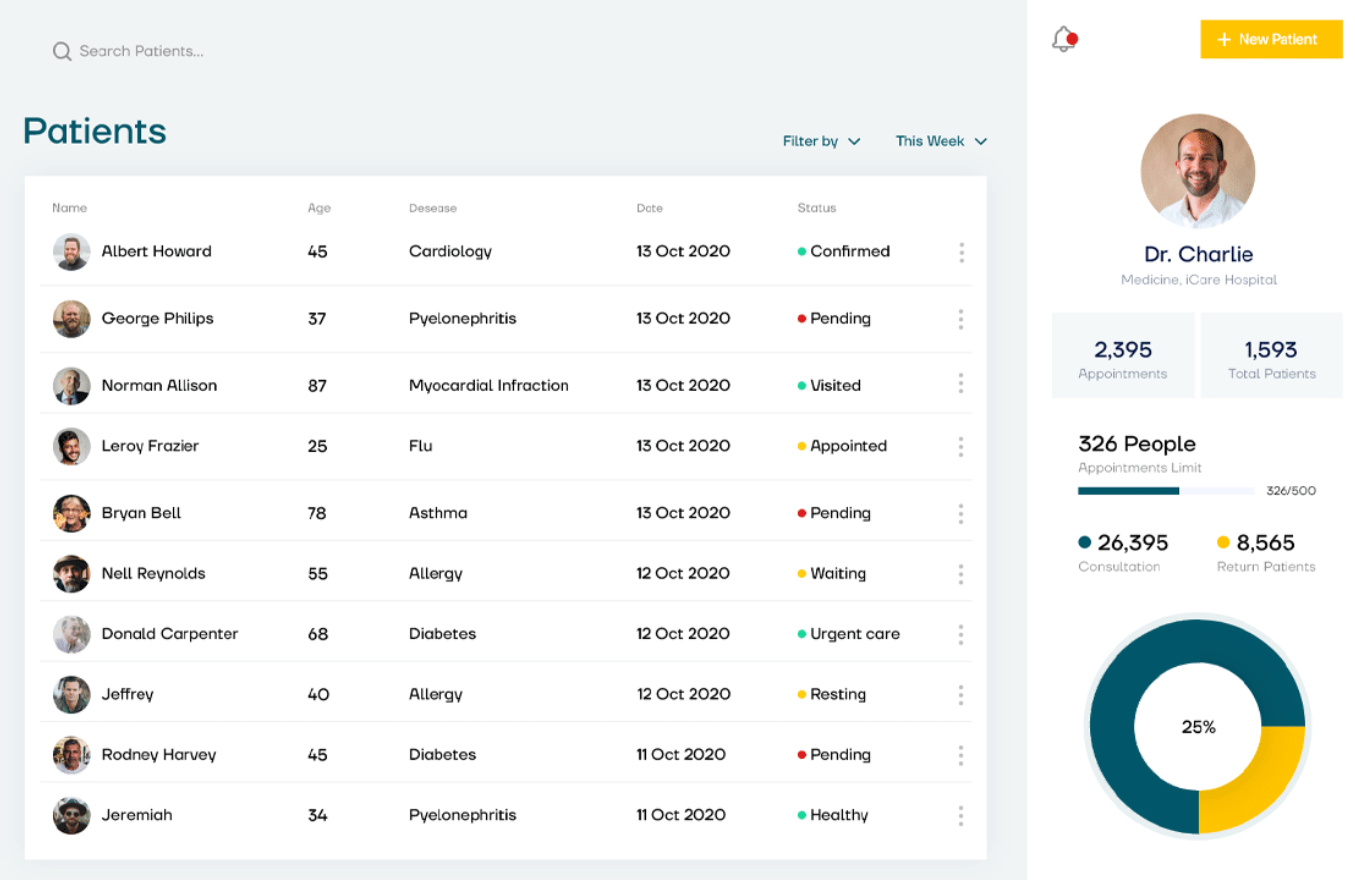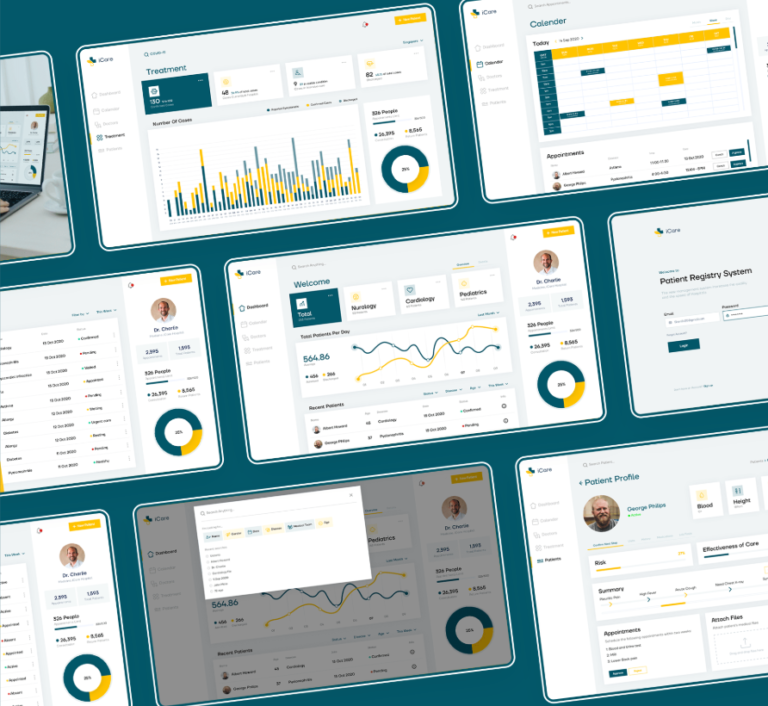Patient Registry System Concept

About
The Patient Registry System is a paperless software solution designed to streamline patient registration processes in hospitals and healthcare organizations. It facilitates faster check-ins and aids in collecting comprehensive patient demographic information, thereby enhancing operational efficiency at the front desk.
Location
U.S. – 2025
Services
Patient Registration, Data Management
Industry
Healthcare

Challenges
The primary challenges involved transitioning from traditional paper-based registration to a digital system, ensuring user-friendly interfaces for both patients and administrative staff, integrating with existing hospital information systems, and maintaining data security and compliance with healthcare regulations.
The Problem
Inefficient Paper-Based Registration Processes
Hospitals and healthcare organizations often rely on manual, paper-based systems for patient registration, leading to several inefficiencies:
- Time-Consuming Check-Ins: Manual entry of patient information results in longer wait times and delays in service delivery.
- Data Entry Errors: Handwritten forms are prone to errors, which can lead to incorrect patient information being recorded.
- Storage and Retrieval Issues: Physical documents require substantial storage space and can be difficult to retrieve when needed, hindering quick access to patient records.
- Lack of Real-Time Data Access: Paper records do not allow for immediate sharing or updating of patient information across departments, affecting coordinated care.
Solution
Implementation of a Paperless Patient Registry System
The Patient Registry System was developed to address these challenges by providing:
- Digital Check-In Process: Patients can register electronically, reducing wait times and improving the overall patient experience.
- Accurate Data Collection: The system ensures precise capture of patient demographics, minimizing errors associated with manual data entry.
- Secure Data Storage and Retrieval: Electronic records are stored securely and can be accessed quickly by authorized personnel, enhancing operational efficiency.
- Real-Time Information Sharing: The system allows for immediate updating and sharing of patient information across various departments, facilitating coordinated and effective patient care.

Testimonial

“Implementing the Patient Registry System has revolutionized our front desk operations. The transition to a paperless environment was seamless, and we have seen a significant improvement in patient check-in times and data accuracy.”
Chief Executive Officer
MI Corporation
Process
The development process included:
- Product Discovery: Understanding the specific needs of healthcare facilities and identifying key functionalities required for the system.
- Product Design: Creating user-friendly interfaces and workflows tailored to both patients and administrative staff.
- Development: Building the system with a focus on integration capabilities, data security, and compliance with healthcare standards.
- Testing & Bug Fixing: Conducting thorough testing to ensure reliability, security, and user satisfaction.
- Launch: Deploying the system in a live healthcare environment and providing training to staff.
- Product Optimization & Maintenance: Ongoing monitoring and updates to adapt to evolving needs and technological advancements.
Wireframes & UI/UX Design
The design phase focused on creating intuitive interfaces that facilitate easy navigation for users. Tools like Figma were utilized to enable collaborative design and iterative feedback.

Wireframes were developed to map out the user journey, ensuring a seamless experience for both patients during check-in and staff during data management.

Development
The system was developed with scalability and security as top priorities. A modular architecture was adopted to allow for future enhancements without disrupting existing functionalities. Integration with existing hospital information systems was achieved through standardized APIs, ensuring seamless data exchange. Security measures, including data encryption and compliance with healthcare regulations, were implemented to protect patient information.
Results
The implementation of the Patient Registry System led to:
- 50% Reduction in Patient Check-In Times: Streamlined digital processes significantly decreased wait times.
- 40% Improvement in Data Accuracy: Electronic data entry reduced errors associated with manual processes.
- Enhanced Patient Satisfaction: Quicker check-ins and reduced wait times improved the overall patient experience.
- Improved Staff Efficiency: Administrative staff could focus more on patient care rather than paperwork.
Conclusion
The Patient Registry System successfully transformed the patient registration process from a cumbersome, paper-based system to an efficient, digital solution. This transition not only improved operational efficiency but also enhanced patient satisfaction and data accuracy, demonstrating the significant benefits of digitization in healthcare settings.

